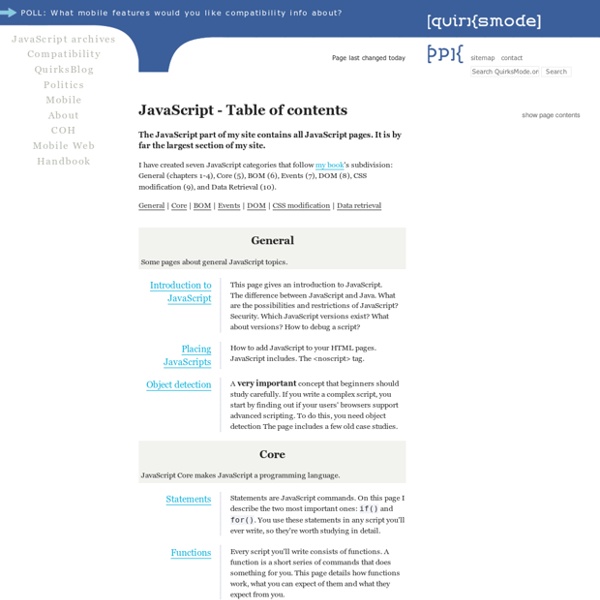



jQuery Fundamentals :: JavaScript Basics jQuery is built on top of JavaScript, a rich and expressive language in its own right. This section covers the basic concepts of JavaScript, as well as some frequent pitfalls for people who have not used JavaScript before. While it will be of particular value to people with no programming experience, even people who have used other programming languages may benefit from learning about some of the peculiarities of JavaScript. Here's a simple JavaScript program that adds a message to the page: In the above example, we use a function called log. You can try running this program by clicking the and it will copy the code to the built-in editor automatically. It's OK if you don't understand everything that's going on in this program; in the rest of this section, we'll talk about variables, functions, and several other building blocks of JavaScript. A comment about comments Comments can be a useful tool for explaining what's happening in a piece of code. The building blocks of JavaScript Objects
Leaflet - a modern, lightweight JavaScript library for interactive maps by CloudMade Dojo: The Definitive Guide Copyright © 2008 Matthew A. Russell O'Reilly books may be purchased for educational, business, or sales promotional use. Online editions are also available for most titles (safari.oreilly.com). For more information, contact our corporate/institutional sales department: (800) 998-9938 or <corporate@oreilly.com>. Nutshell Handbook, the Nutshell Handbook logo, and the O'Reilly logo are registered trademarks of O'Reilly Media, Inc. Java™ is a trademark of Sun Microsystems, Inc. Many of the designations used by manufacturers and sellers to distinguish their products are claimed as trademarks. While every precaution has been taken in the preparation of this book, the publisher and author assume no responsibility for errors or omissions, or for damages resulting from the use of the information contained herein.
The Node Beginner Book The Node Beginner Book » A comprehensive Node.js tutorial Tempo :: The tiny JSON rendering engine by TwigKit Developing Backbone.js Applications - By Addy Osmani (@addyosmani) Available free for open-source reading below or for purchase via the O'Reilly store. Pull requests and comments always welcome. Prelude Not so long ago, “data-rich web application” was an oxymoron. Traditionally, web applications left the heavy-lifting of data to servers that pushed HTML to the browser in complete page loads. Think of the Ajax shopping cart which doesn’t require a refresh on the page when adding an item to your basket. The rise of arbitrary code on the client-side which can talk to the server however it sees fit has meant an increase in client-side complexity. Thankfully, there are a growing number of JavaScript libraries that can help improve the structure and maintainability of your code, making it easier to build ambitious interfaces without a great deal of effort. Begin with the fundamentals, work your way through the exercises, and learn how to build an application that is both cleanly organized and maintainable. Target Audience Credits <!
Popcorn.js | The HTML5 Video Framework